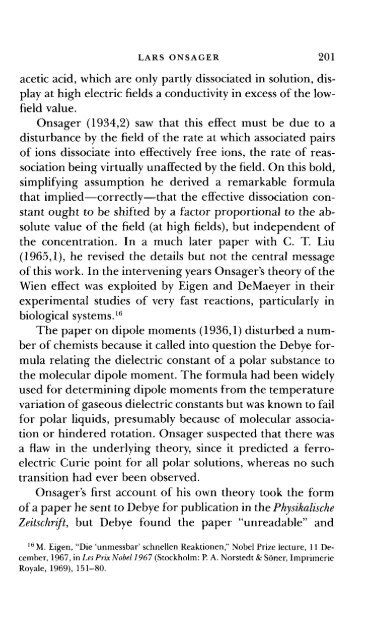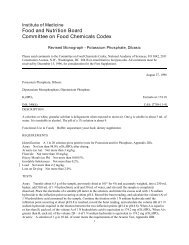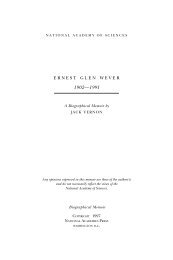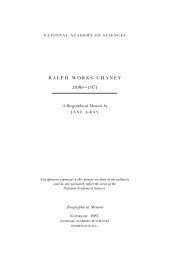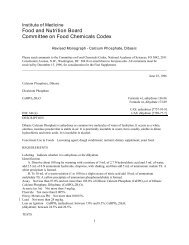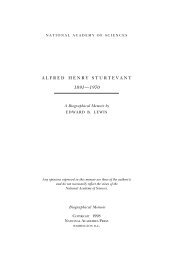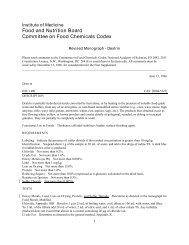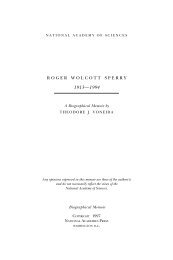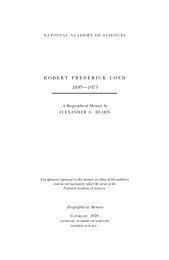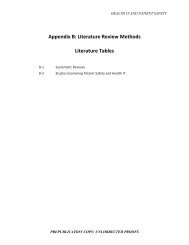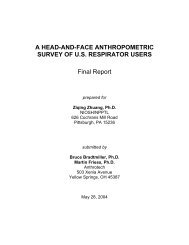LARS ONSAGER - The National Academies Press
LARS ONSAGER - The National Academies Press
LARS ONSAGER - The National Academies Press
You also want an ePaper? Increase the reach of your titles
YUMPU automatically turns print PDFs into web optimized ePapers that Google loves.
<strong>LARS</strong> <strong>ONSAGER</strong> 201<br />
acetic acid, which are only partly dissociated in solution, display<br />
at high electric fields a conductivity in excess of the lowfield<br />
value.<br />
Onsager (1934,2) saw that this effect must be due to a<br />
disturbance by the field of the rate at which associated pairs<br />
of ions dissociate into effectively free ions, the rate of reassociation<br />
being virtually unaffected by the field. On this bold,<br />
simplifying assumption he derived a remarkable formula<br />
that implied—correctly—that the effective dissociation constant<br />
ought to be shifted by a factor proportional to the absolute<br />
value of the field (at high fields), but independent of<br />
the concentration. In a much later paper with C. T. Liu<br />
(1965,1), he revised the details but not the central message<br />
of this work. In the intervening years Onsager's theory of the<br />
Wien effect was exploited by Eigen and DeMaeyer in their<br />
experimental studies of very fast reactions, particularly in<br />
biological systems. 16<br />
<strong>The</strong> paper on dipole moments (1936,1) disturbed a number<br />
of chemists because it called into question the Debye formula<br />
relating the dielectric constant of a polar substance to<br />
the molecular dipole moment. <strong>The</strong> formula had been widely<br />
used for determining dipole moments from the temperature<br />
variation of gaseous dielectric constants but was known to fail<br />
for polar liquids, presumably because of molecular association<br />
or hindered rotation. Onsager suspected that there was<br />
a flaw in the underlying theory, since it predicted a ferroelectric<br />
Curie point for all polar solutions, whereas no such<br />
transition had ever been observed.<br />
Onsager's first account of his own theory took the form<br />
of a paper he sent to Debye for publication in the Physikalische<br />
Zeitschrift, but Debye found the paper "unreadable" and<br />
16 M. Eigen, "Die 'unmessbar' schnellen Keaktionen," Nobel Prize lecture, 11 December,<br />
1967, in Les Prix Nobel 1967 (Stockholm: P. A. Norstedt & Sdner, Imprimerie<br />
Royale, 1969), 151-80.


